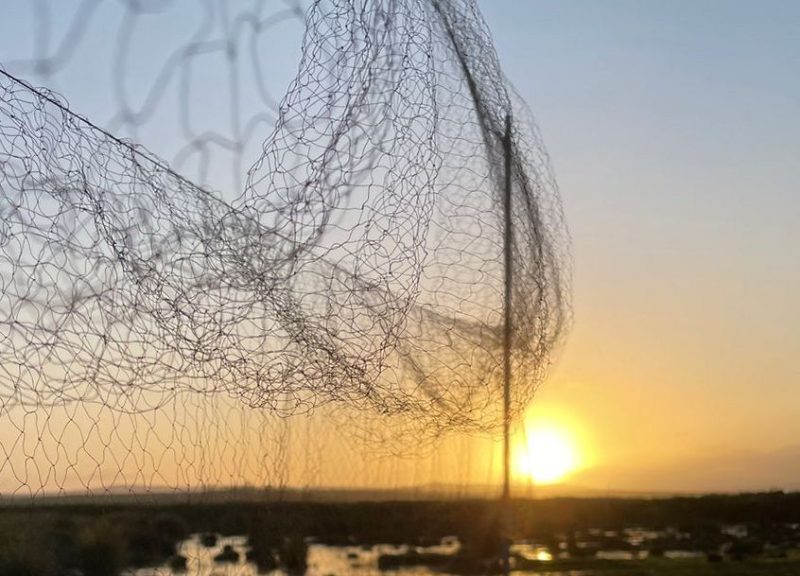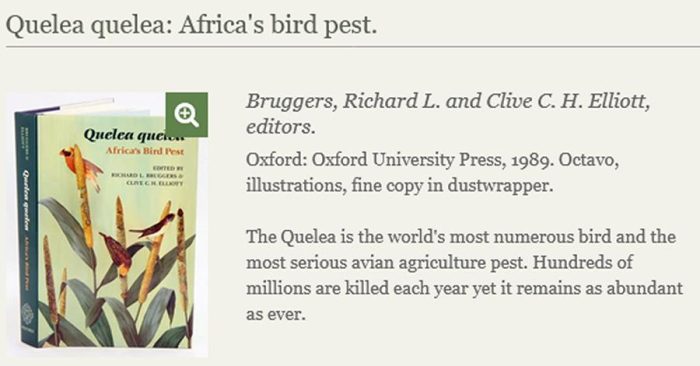This is a report on our seventh bird ringing expedition to the Nuwejaars Wetlands. We were here from Saturday 9 to Thursday 14 August 2025, five nights. This seems to have become a standard length for these trips!
On Saturday afternoon, and Sunday morning, we ringed around the werf at our accommodation at Hazevlakte. The weather was not kind, with occasional squalls of rain and and regular blusters of wind. It was “clearing showers”, and by Sunday afternoon the wind had faded and the sun emerged.
There are spots in and around the werf where mist nets are sheltered from the wind, and they did pretty well, considering the conditions.
Although it still felt like winter, spring must be in the air ….
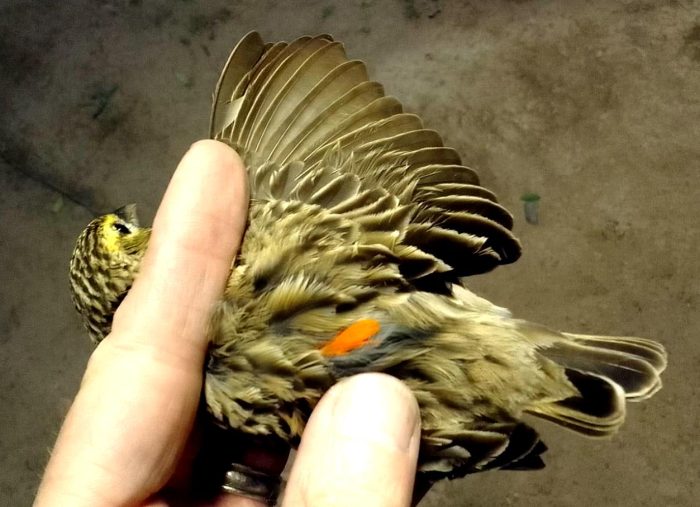
… because this red feather on this male Southern Red Bishop is the start of breeding plumage. When spring finally arrives properly, this bird will be among the first to be ready to show off his bold black and red plumage to the females.
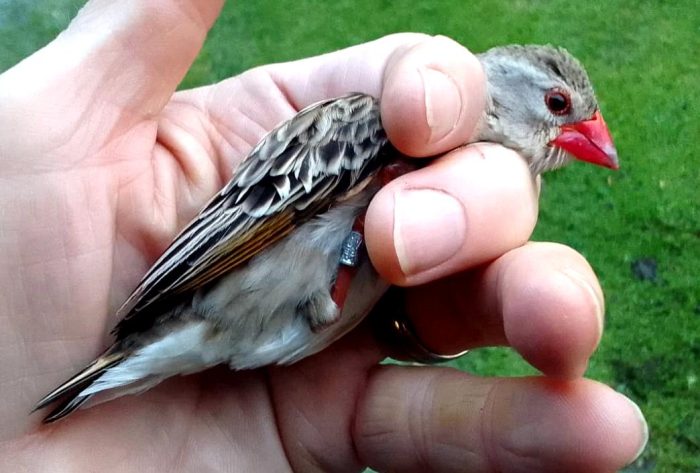
This Red-billed Quelea, mistnetted on the werf at Nuwejaars, is the first we have ringed on our seven ringing trips to the Nuwejaars Wetlands SMA over the past year. It is a vagrant to the Agulhas Plain, with only a handful of previous sightings, the first on a SABAP2 checklist in 2011. It is a species to keep an eye on. Sir Clive Elliott, the first ringing coordinator employed at SAFRING, went on to co-edit an authoritative book about the quelea, called Africa’s Bird Pest …
We don’t need quelea populations to reach pest proportions in a region which produces wheat and other grain crops.
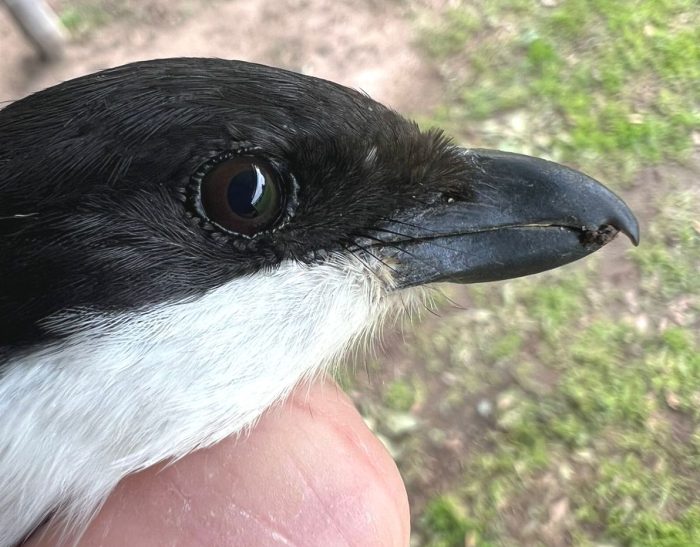
This Southern Fiscal was a retrap. It was ringed on our first visit here on 7 October last year. It was also retrapped here on 20 March this year. A resident!
On Monday morning we ringed on the northern edge of the flood plain of the Nuwejaars River. At dawn it looked like this…
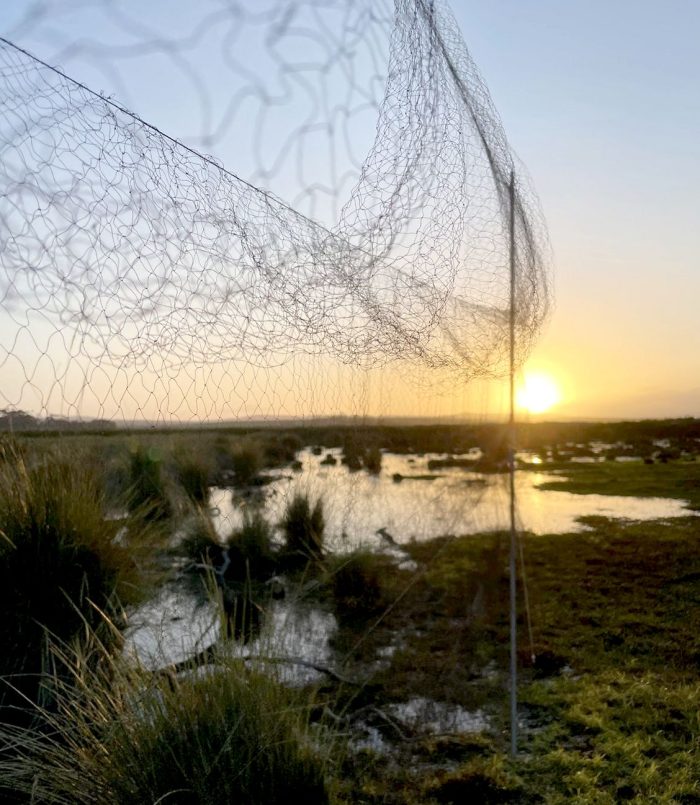
… and in the bright winter sun, a rich texture is added to the mosaic of flood plain habitats …
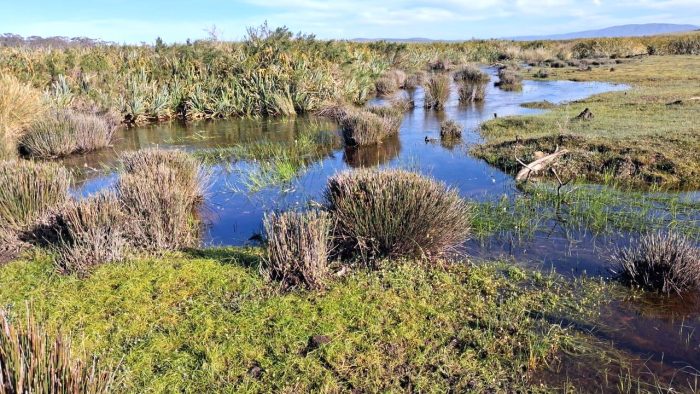
… we need to remind ourselves that a few years ago this was a tangle of alien vegetation, and has been rehabilitated by the dedicated team of staff of the Nuwejaars Wetlands SMA.
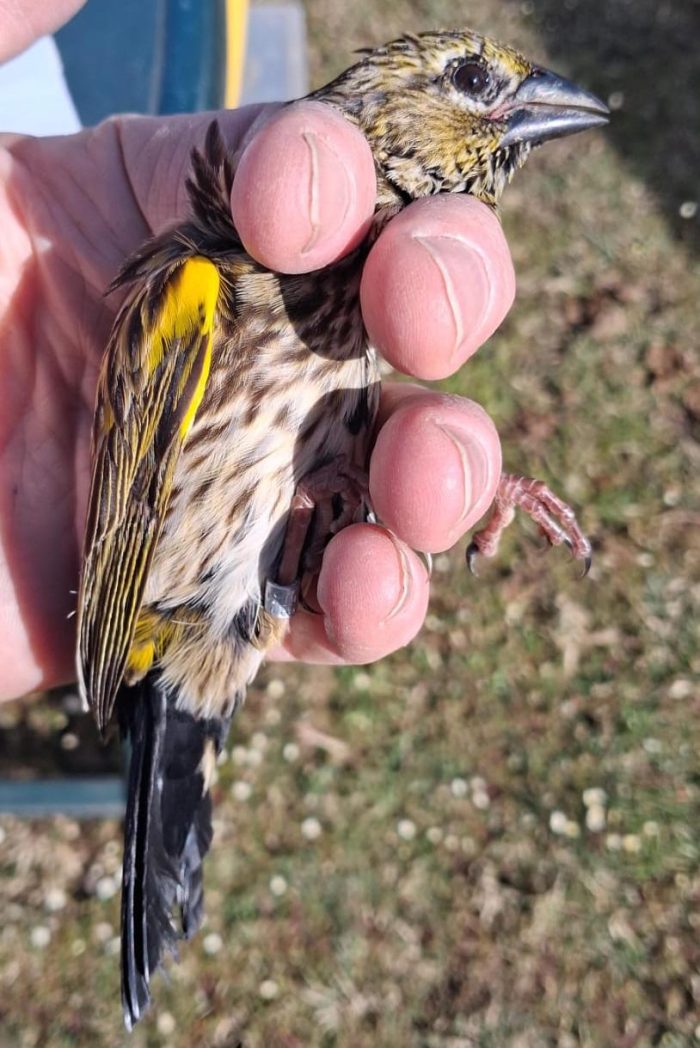
This male Yellow Bishop is also feeling the impact of spring on the horizon, and is starting to get his breeding plumage. The head is looking untidy as the black feathers start to grow.

The first of three Black Crakes which we ringed during the expedition.
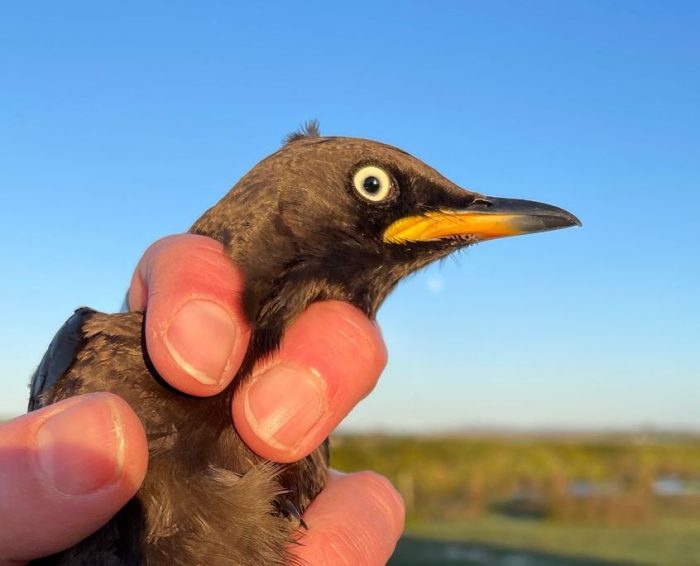
Although they are not particularly wetland birds, this African Pied Starling was mistnetted while commuting across the flood plain. Close up, the fleshy yellow structure of the gape is clear, and the creamy white eye.
Late on Monday afternoon, we set up nets at a patch of planted proteas and adjacent fynbos.
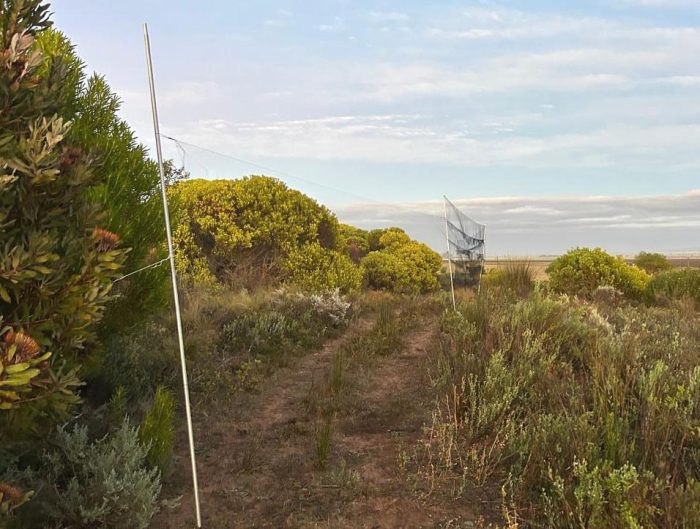
The photo above illustrates why mist nets work. At this angle, the net between the first and second poles is almost invisible. The net between the second and third poles is conspicuous because we are looking at it almost end on. The nets are “furled” overnight. This makes it impossible for them to catch bats, owls, nightjars and anything else that flies in the night.
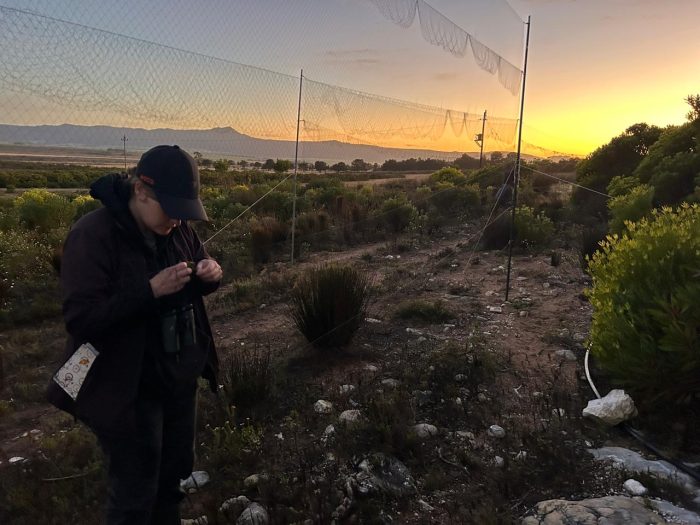
We were back early on Tuesday morning, and opened the nets, and did not have long to wait …
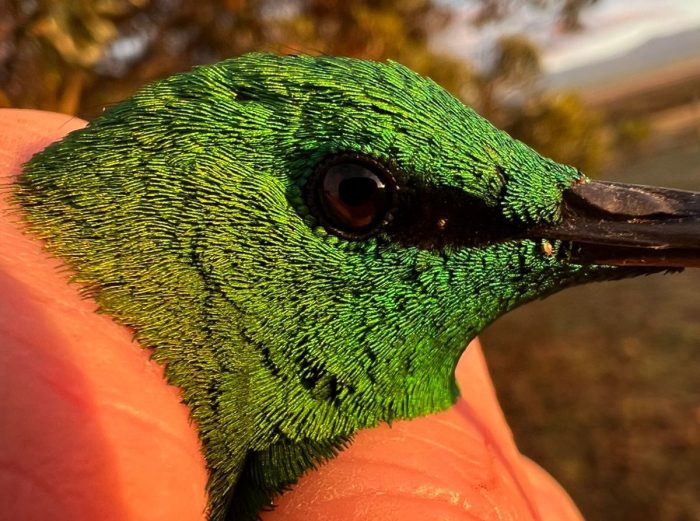
… in the fynbos habitat, Malachite Sunbird was one of the species we anticipated. We caught five.

Another white-eyed bird, Bar-throated Apalis.

There were only a handful of open flowers in the protea stand, so we did not mist net any Cape Sugarbirds. There were only a handful still present.
On Wednesday morning ringed at the section of floodplain on the farm Moddervlei. We had put up mist nets (and furled them) the evening before …
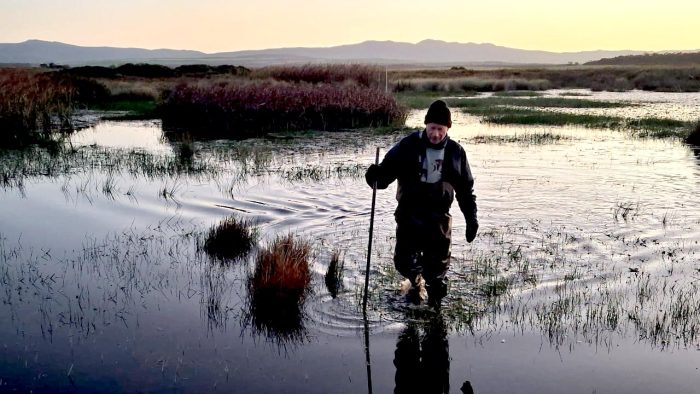
… and here is Dieter Oschadleus returning from opening one of the mist nets over quite deep water. The poles are just visible over his right shoulder.

Tools of the ringing trade!

Black Crake number two, of three that we ringed!
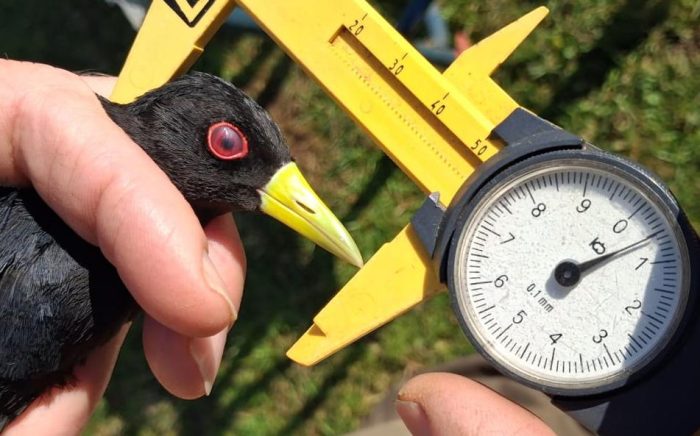
This measurement, known as “total head length”, is 50.6 mm on the dial callipers. Total head length is a more repeatable measurement than “bill length”.

The crakes were appropriately celebrated with a slab of chocolate!
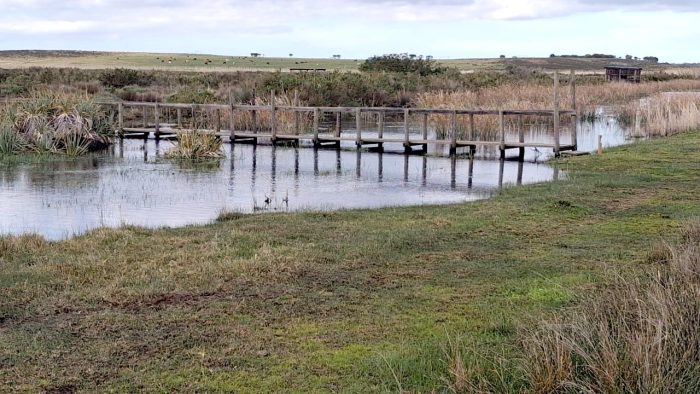
Two of the objectives of this expedition were to get a feel for how our existing ringing sites worked in the depths of winter, and also to explore new potential sites. On Wednesday afternoon we had a good recce at this site, along the African Marsh Harrier Trail of the Nuwejaars Wetlands Special Management Area. We found excellent habitat and great ringing sites. This was where the snipes had moved to! We will set up mist nets in this area on our next visit, which is 19 to 24 September 2025.
After a short ringing session at the Hazevlakte werf, we travelled back to Cape Town on Thursday morning.
Dieter produced this table of birds handled:
| Species | Count |
| Black Crake | 3 |
| Speckled Mousebird | 1 |
| Cape Bulbul | 5 |
| Lesser Swamp Warbler | 4 |
| Little Rush Warbler | 1 |
| Bar-throated Apalis | 1 |
| Levaillant’s Cisticola | 1 |
| Southern Fiscal | 3 |
| Southern Boubou | 1 |
| African Pied Starling | 6 |
| Malachite Sunbird | 5 |
| Southern Double-collared Sunbird | 7 |
| House Sparrow | 6 |
| Cape Sparrow | 1 |
| Cape Weaver | 60 |
| Southern Masked Weaver | 17 |
| Red-billed Quelea | 1 |
| Southern Red Bishop | 19 |
| Yellow Bishop | 5 |
| Cape White-eye | 4 |
| Karoo Prinia | 1 |
| Totals: 21 species | 152 |
There were 28 retraps of birds ringed on previous ringing visits here. Amazingly, there were 11 retraps from our first visit here in early October last year. Nine of the 11 were Cape Weavers, one was a Cape Sparrow and one was the Southern Fiscal featured above.
Only two of the previous six trips to Nuwejaars Wetlands have blogs! They are the trips from 7 to 11 April 2025, and from 30 May to 4 June 2025. There is a list of all earlier trips with blogs here.
Future BDI events are listed here.
We are grateful for the support of the team at the Nuwejaars Wetlands Special Management Area, Ross Kettles and Erica Brink. Thanks to Karen and Con Neethling for the warm welcome, once again, to the accommodation on the farm Hazevlakte. Thanks to Con and Liohan Giliomee for permission to ring on their farms.

